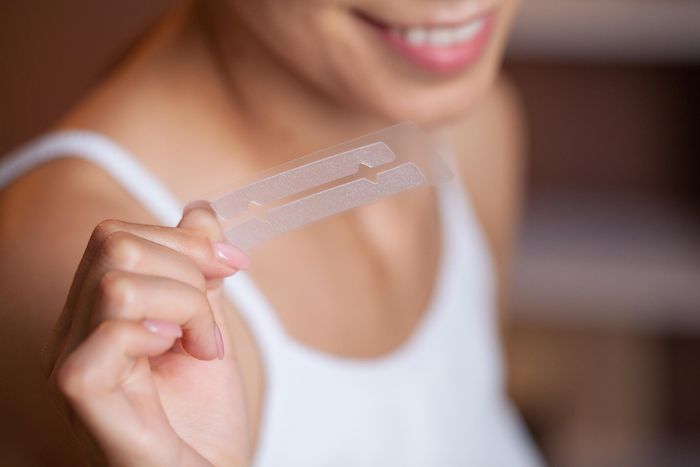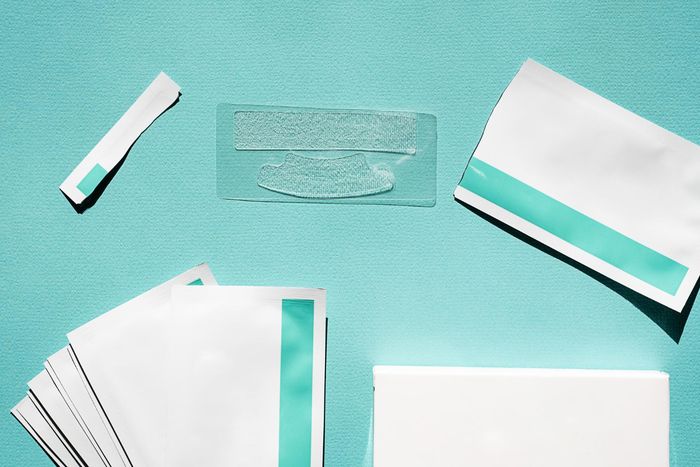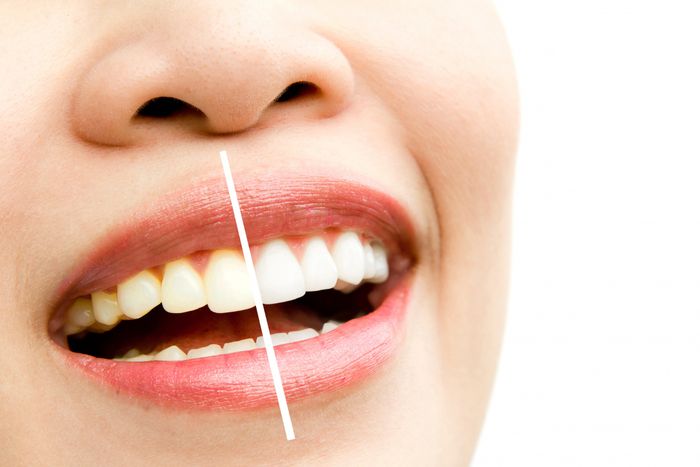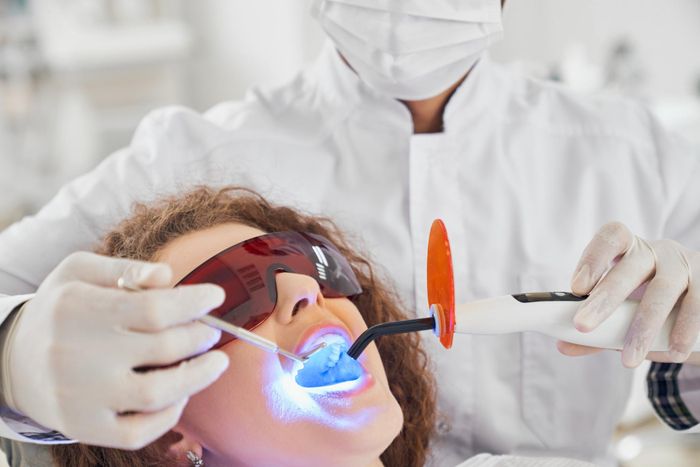Do Teeth Whitening Strips Really Work?
The practice of whitening teeth at home is quite common but do whitening strips work? For many, it seems like a simple home remedy.
Without taking any precautions, they apply transparent bands filled with hydrogen peroxide to their teeth for 15-20 days.

People are still satisfied with whitening their teeth only by 1 to 2 shades despite the long treatment period, tooth sensitivity, and pain during the procedure.
You can, however, whiten your teeth up to 5-8 shades with professional teeth whitening methods rather than this painful and long journey. Furthermore, they are safe methods that are performed in just 45 minutes following complete gingival isolation.
What are Whitening Strips?
Teeth whitening strips are transparent tapes containing a small amount of hydrogen peroxide, or carbamide peroxide-which carries the hydrogen peroxide that dissolves once they come in contact with water.
There are two sizes available for attachment to upper and lower teeth. According to their hydrogen peroxide content, they need to be used for 14 or 21 days to see the desired results.
Due to the lack of measures to isolate the gingiva during their use, sensitive teeth and bleeding gums are common problems. However, after the treatment, up to 2 shades of whiter teeth can be achieved. To find the best whitening strips, there are many tester studies available on the Internet. They are more prevalent in countries with high dental costs because they are inexpensive.
How Do Whitening Strips Work?
Unlike professional supervision, these products contain small amounts of hydrogen peroxide. They can, however, whiten the teeth since they require long-term use.

In the enamel and dentin area, hydrogen peroxide penetrates and breaks down the stain structures. Thus, the teeth are whitened. However, during this process, the gingiva is exposed to hydrogen peroxide.
How to Use Teeth Whitening Strips?
Using teeth whitening strips is very easy. Due to the different amounts of hydrogen peroxide used by different brands, application times may differ. In general, however, the methods of application are similar.
How to Apply Whitening Strips?
We can examine the application of whiting strips under 4 headings.
Placing the Strips
The teeth whitening strips will stick better to your teeth if you don't brush them just before placing them. You can then follow these steps in order.
- The clear tape must be placed parallel to your gums.
- Your tapes must be pressed on and between your teeth after sticking.
- Lastly, fold the transparent hands backward.
Number of Application Day
Some products can be used once a day, but others may need to be used twice. The product description will tell you how to apply it.
Time Per Application
The application usually lasts between 10 and 45 minutes. The chemical composition of each product may require different application times.
Length of Treatment
The application times also differ greatly. Some products can be used for a week, while others may need to be used for 2 weeks, 3 weeks, or even a month. Remember that short-term products contain high concentrations of hydrogen peroxide and are less regulated, so the risk will be greater.
How Long Do Whitening Strips Last?
Typically, these products last six months. The procedure may need to be repeated after 6 months. If you prefer whitening strips for teeth, you must make them a regular part of your routine.
How Often Should You Use Whitening Strips?
After beginning to use the whitening strips, you should use them once or twice a day without taking a break. You will also need to repeat this procedure after their effect wears off (on average 6 months).

Are Whitening Strips Safe?
There are so many different products available in the market. As a whitening ingredient, they all contain hydrogen peroxide. Since their amount of content varies, some have a quick effect while others take longer. Thus, the risk factor of each varies depending on its hydrogen peroxide content.
According to studies, 67% of patients have thermal sensitivity due to overuse. Gingival recession is a disease specific to the elderly. However, it may also be accelerated by hydrogen peroxide exposure at an early age.
Furthermore, the use of whitening agents without any isolation can lead to complications such as tooth sensitivity, gingival irritation, throat irritation, and nausea.
Can You Use Whitening Strips with Braces?
There is a greater risk of discoloration with braces. You can only use these products once your brace treatment is over.
Do Teeth Whitening Strips Damage Your Teeth?
If you have teeth whitening done by a dental professional, it will not cause any damage to your teeth. In professional techniques, soft tissues such as gums are isolated, so chemicals that whiten the teeth are only applied to the tooth surface.
These methods also work to whiten the whole tooth, not just the front surface. In Over-the-Counter methods, whitening agents are unable to fully penetrate between and behind the teeth. Because of this, you may notice yellow stains on the back or sides of your teeth.

Professional Teeth Whitening
There are typically two methods of teeth whitening performed under professional supervision. Both of these methods completely isolate soft tissue, so hydrogen peroxide has no negative effects.
In-Office Whitening
This method involves applying high-density hydrogen peroxide to the entire tooth. Before the treatment, a rubber dam is placed on the mouth, and protective gel is applied to the patient's lips and gums.
Hydrogen peroxide is then applied to the tooth surfaces, and the patient is exposed to therapeutic light for 45 minutes. In a single session, 5 to 8 degrees of whitening can be achieved, depending on the degree of staining. The effect of the treatment lasts for about 2 years.
Tray-Based Bleaching;
In this method, a custom tray is produced according to the patient's teeth. The dentist gives the patient the whitening gel along with the custom tray. Custom trailers are designed and produced in a way that will not cause leakage and cover all of your teeth. The custom tray can be renewed by your dentist if it leaks during use.
